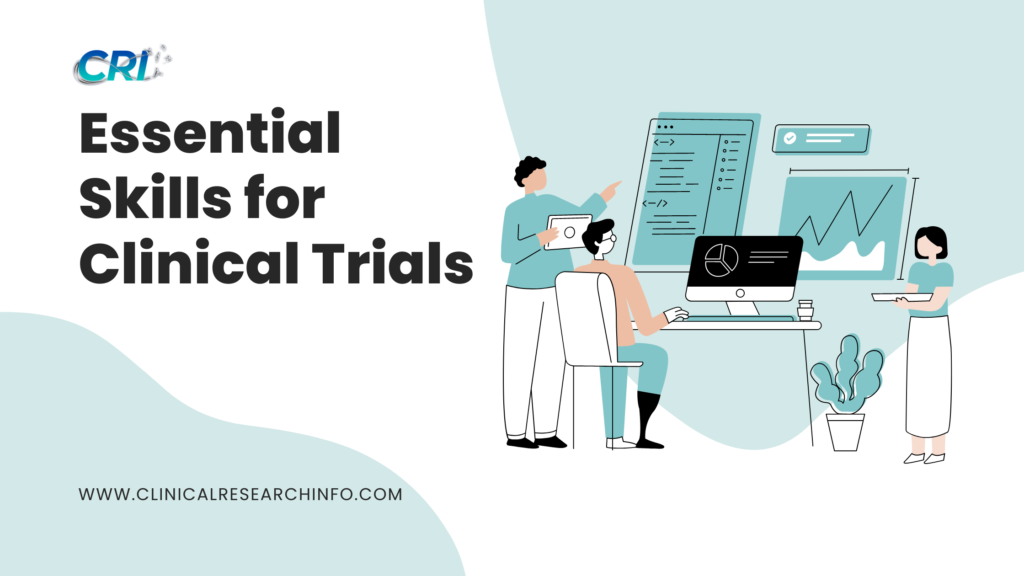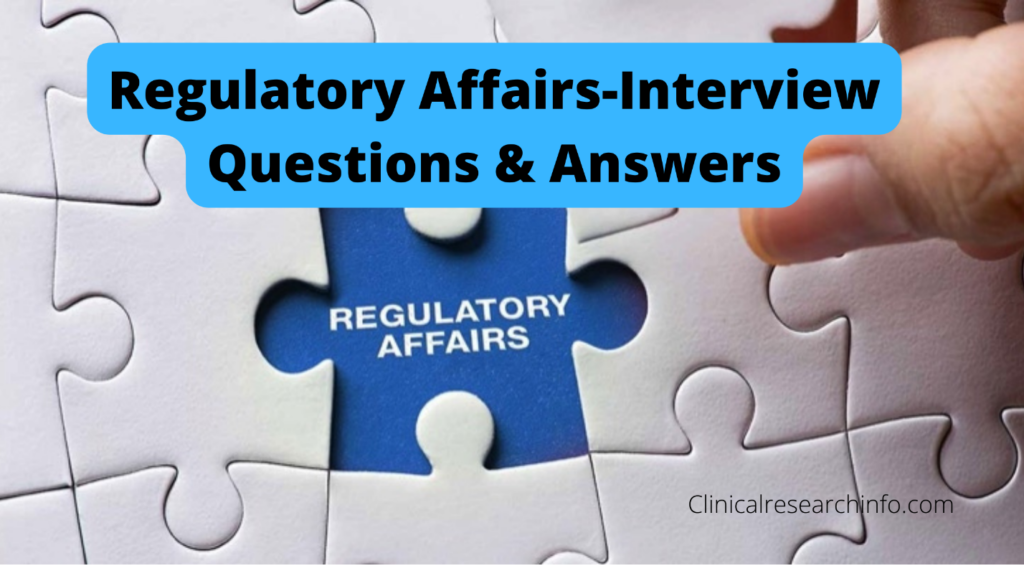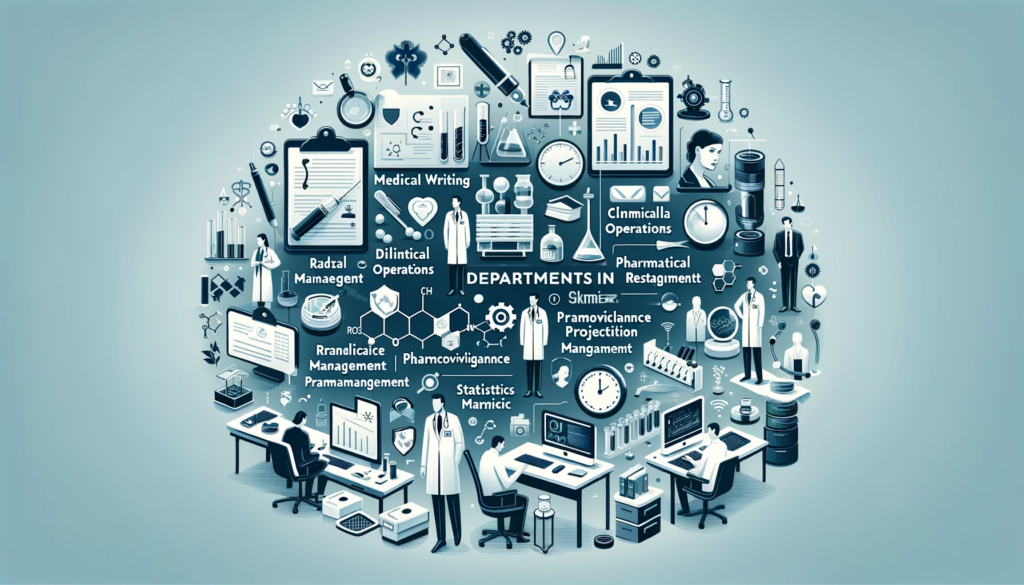Regulatory Affairs in the Pharmaceutical industry is a profession that acts as the interface between the pharmaceutical industry and Drug Regulatory authorities across the world. It is mainly involved in the registration of the drug products in respective countries prior to their marketing. What are the goals of Regulatory Affairs Professionals? What are the Roles of Regulatory Affairs professionals? What is an Investigational New Drug (IND) application? It is an application that is filed with FDA to get approval for legally testing an experimental drug on human subjects in the USA What is a New Drug Application? The NDA is the vehicle through which drug sponsors formally propose that the FDA approve a new pharmaceutical for sale and marketing in the U.S. The data gathered during the animal studies and human clinical trials of an Investigational new drug become part of the NDAIn simple words, “It is an application which is filed with FDA to market a new Pharmaceutical for sale in the USA” What is an Abbreviated New Drug Application (ANDA)? It is an application filed with FDA, for a U.S. generic drug approval for an existing licensed medication or approved drug.In simple words, “It is an application for the approval of Generic Drugs “ What is a Generic Drug Product? A generic drug product is one that is comparable to an innovator drug product in dosage form, strength, route of administration, quality, performance characteristics, and intended use. What is a DMF? A Drug Master File (DMF) is a submission to the Food and Drug Administration (FDA) that may be used to provide confidential detailed information about facilities, processes, or articles used in the manufacturing, processing, packaging, and storing of one or more human drugs.Important facts regarding DMFs· It is submitted to FDA to provide confidential information· Its submission is not required by law or regulations· It is neither approved nor disapproved· It is filed with FDA to support NDA, IND, ANDA another DMF, or amendments and supplements toany of these· It is provided for in the 21 CFR (Code of Federal Regulations) 314. 420· It is not required when the applicant references its own information What are the types of DMFs? Type I: Manufacturing Site, Facilities, Operating Procedures, and Personnel (No longer accepted by FDA)Type II: Drug Substance, Drug Substance Intermediate, and Material Used in Their Preparation, or DrugProductType III: Packaging MaterialType IV: Excipient, Colorant, Flavor, Essence, or Material Used in Their PreparationType V: FDA Accepted Reference Information (FDA discourages its use) What is a 505 (b) (2) application? 505 (b)(2) application is a type of NDA for which one or more investigations relied on by the applicant for approval were not conducted by/for the applicant and for which the applicant has not obtained a right of reference. What kind of application can be submitted as a 505(b)(2) application? What are the examples of changes to approved drug products for which 505(b)(2) applicationshould be submitted? What are the chemical classification codes for NDA? What are the differences between NDA and 505 (b)(2) application? New Drug Application (NDA) 505 (b)(2) Application All investigations relied on by the applicant for approval were conducted by/for the applicant and for which the applicant has the right of reference One or more investigations relied on by the applicant for approval were not conducted by/for the applicant and for which the applicant has not obtained a right of reference Generally, filed for newly invented pharmaceuticals. Generally, filed for new dosage form, new route of administration, new indication, etc for all already approved pharmaceuticals. Note: 505 (b)(2) application is a type of NDA. What is a Marketing Authorization Application? It is an application filed with the relevant authority in Europe (typically, the UK’s MHRA or the EMA’s Committee for Medicinal Products for Human Use (CHMP)) to market a drug or medicine. As per UK’s MHRAApplications for new active substances are described as ‘full applications’. Applications for medicines containing existing active substances are described as ‘abbreviated’ or ‘abridged applications’. What is an ASMF? An active substance master file is a submission that is made to EMA, MHRA, or any other Drug Regulatory Authority in Europe to provide a confidential intellectual property or ‘know-how’ of the manufacturer of the active substance. In simple words, “It is a submission made to European Drug regulatory agencies on the confidential information of Active Substance or Active Pharmaceutical Ingredient (API)”. What are the types of active substances for which ASMFs are submitted? What is the difference between DMF and ASMF (concerning submission)? ASMF is submitted as Applicant’s Part (Open Part) and Restricted Part (Closed Part) There isn’t any differentiation of DMFs into parts What is ICH? International Conference on Harmonisation of Technical Requirements for Registration of Pharmaceuticals for Human Use (ICH): is a project that brings together the regulatory authorities of Europe, Japan, and the United States and experts from the pharmaceutical industry in the three regions to discuss scientific and technical aspects of pharmaceutical product registration. What is CTD? The Common Technical Document (CTD) is a set of specifications for the application dossier, for the registration of Medicines and is designed to be used across Europe, Japan, and the United States. Quality, Safety, and Efficacy information are assembled in a common format through CTD. The CTD is maintained by the International Conference on Harmonisation of Technical Requirements for Registration ofPharmaceuticals for Human Use (ICH). CTD format for submission of drug registration applications/dossiers is widely accepted by regulatory authorities of other countries too like Canada, Australia, etc. What are the ICH guidelines to be referred to for the preparation of registration dossiers/applications of medicines (With respect to format and contents in each module)? What are the modules in CTD? What is Orange Book? It is the commonly used name for the book “Approved Drug Products with Therapeutic Equivalence Evaluations”, which is published by USFDA. It contains the list of drug products, approved on the basis of safety and effectiveness by the Food and Drug Administration (FDA) under the Federal Food,






